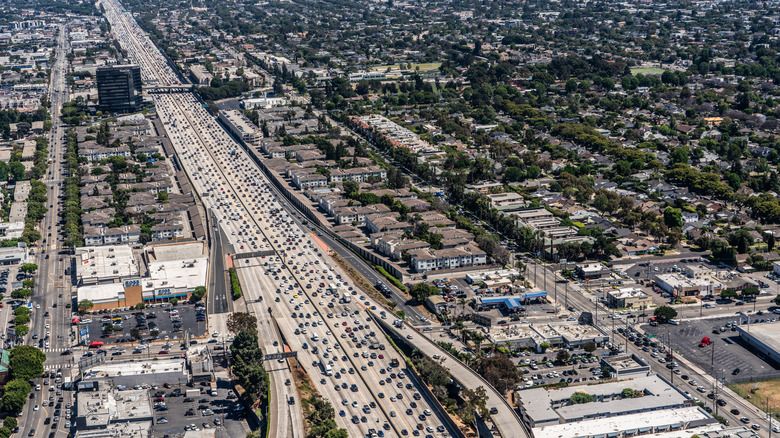Los Angeles' Upcoming High-Capacity Train Aims To Connect The Valley, Coast, & LAX
One of the things California is known for is its car culture. Sadly, this often leads to freeways becoming clogged with traffic. As a matter of fact, many cities in California, such as Los Angeles, are notorious for extreme time-wasting gridlock, with residents spending more than 100 hours in traffic on a yearly basis.
The Sepulveda Pass along the 405 freeway, particularly, is one of the U.S.' most congested urban freeways, as thousands of vehicles travel the route on a daily basis. As a result, some transportation projects are being rolled out to solve the traffic jam problem. Specifically, the Sepulveda Transit Corridor is in the works to provide a high-capacity rail line that would ease the car saturation on the 405. With this, there will be less need for a car to move around certain places in the U.S.
The Sepulveda Transit Corridor project is planned for two phases: starting with the construction of a rail link between the Valley and Westside via the Sepulveda Pass, then followed by an extension down to Los Angeles International Airport (LAX). For now, Metro is considering about five different alternatives, involving monorail and heavy rail options. As part of the decision process, which involves input from local cities and stakeholders, Metro hopes to recommend a Locally Preferred Alternative (LPA) to its board. Culver City, for instance, did express support for Alternatives 4 and 5, expected to connect heavy rail from Sherman Oaks to Santa Monica as well as Van Nuys to Westwood. Similarly, stakeholder LA SkyRail Express suggested Alternatives 1 and 3.
Benefits to enjoy from the Sepulveda Transit Corridor project and key things to note
First off, the train will likely help save time spent commuting, since it cuts down on L.A.'s notorious traffic issues. In the same vein, it'll help reduce stress among commuters. And by the time the project is completed, it could link directly with currently existing and even future Metro lines, including the Green Line, D Line (Purple) extension, and the Automated People Mover (APM) that's being planned for LAX. This means passengers might not need to switch to a car. Moreover, estimates suggest travel time could massively drop to about 30 minutes on the train, compared to the usual hours by car. The environmental impact is another thing worth noting, as a reduced need for cars on the road is a way to cut down carbon emissions in L.A.
As considerations are ongoing regarding monorail and heavy rail, it's important to know what's unique about each option. The monorail option is cheaper, but the problem is that it's slower and has less carrying capacity. On the other hand, the heavy rail system, although more expensive, will bring about a faster travel experience with more passenger capacity. Whatever the case, the situation will be much better than the present car-centered condition.
The project's construction cost is anticipated to fall between $15.4 billion and $24.4 billion, depending on the eventual choice, and the costs for annual operation and maintenance is expected to be between $130 million and $157 million. Regarding how the project's funded, about $9.5 billion is expected from Measure M (the transportation sales tax which was approved in 2016 by L.A. voters), and there will also be supplementary funding from other local, state, and federal sources.
Staying informed and prepared ahead of LA's future rail transit
While construction won't start overnight, a lot's already happening behind the scenes, and it's important to stay in the loop. One of the best ways to stay updated is through Metro's official page for the Sepulveda project, where you can check out the proposed route maps. You can get info through local news too. Currently, the project is still in its environmental review stage; note, however, that the Draft Environmental Impact Report (DEIR) was released in June 2025, and the public comment period officially closed on August 30, 2025.
It's hoped that Metro will finalize decisions on the Locally Preferred Alternative (LPA) by early 2026, after which the Final Environmental Impact Report (FEIR) will be provided, followed by proper move on design and construction. The first phase, which involves connecting the Valley and Westside, is expected to finish around 2033 to 2035, and probably early enough to meet up with the 2028 Olympics. As for the subsequent LAX extension, everything could be completed sometime in the 2040s. So it's not a thing that's going to happen in a flash, but when it's done, road trips could become so much easier around the concerned areas due to better traffic conditions.


